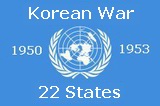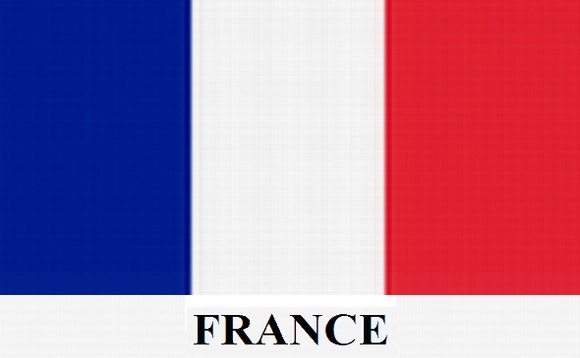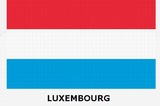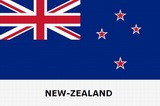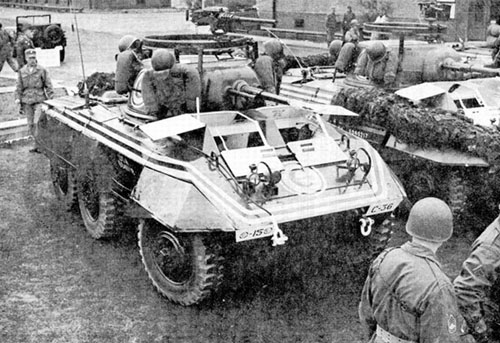The Death of GM 100
Steve and Jen bring you this daily review of the news
Wednesday, May 04, 2005
http://stevegilliard.blogspot.fr/2005/05/death-of-gm-100.html
An M8 armored car, used by the French in Vietnam
This came to mind because of the way US units are roadbound in Iraq. While it is unlikely to happen on this scale, in this way, this is reason the US moved to massive fleets of helicopters(1).
The Defeat of GM 100
Comparison of Antagonists When the French-Indochina War began in 1946, France firmly believed that her superior technology and military machine would defeat the Vietnamese peasants quickly enough.
France received a good deal of military equipment from the United States and Great Britain and benefited from the support of both nations. France set up a series of provincial commands in Vietnam’s towns and cities from which it would launch attacks into the northern portion of Vietnam, using overwhelming combat power to grind the Viet Minh into submission. To help them in their fight, the French also used special operations troops to recruit mountain tribesmen who disliked the Vietnamese. France underrated the ability and fighting savvy of their opponents and would continue to do so for the duration of the war.
The Viet Minh had no illusions about their capabilities against the French military, nor how they would wage their war for independence. The VM initially fought a guerrilla war against the French, ambushing light convoys, overwhelming under-defended outposts and striking at supply and ammunition depots to hinder France’s resupply efforts while adding to their own cache of weapons and ammunition. As the years progressed, the VM, receiving military aid from China in the form of equipment and military advisors, were able to fight larger engagements with French forces, oftentimes overwhelming French forces with human wave tactics. VM doctrine attempted to avoid the setpiece battle unless they enjoyed an overwhelming force ratio, as evidenced in their 12-to-1 advantage against the French defenders at Dien Bien Phu. Ho Chi Minh’s strategy was to bleed France dry, knowing that his people were in it for the long run, while the French were not.
The G.M.s were designed as self-sustaining motorized brigades modeled after the U.S. Army’s World War II combat commands. The G.M.s typically consisted of three infantry battalions with one artillery battalion, along with elements of light armor or tanks, engineer, signal and medical assets, totaling 3,000-3,500 soldiers. The G.M.s were effective at rapidly reinforcing threatened sectors in the Delta, but the hills and swamps, prevalent in Vietnam, hindered their effectiveness, restricting the G.M.s to narrow roads. Their mobility quickly became their Achilles heel, as their vehicles could not traverse the restricted terrain.
The French order of battle included:
• Groupement Mobile 100, Colonel Barrou, commanding.
- Headquarters Company 100, Capt. Fievet, commanding.
• Regiment de Coree (Korea Regiment), Lieutenant Colonel Lajounie, commanding.
• 1st Bataillon de Coree (Korea), Major Kleinmann, commanding.
• 2nd Bataillon de Coree (Korea), Major Guinard, commanding.
• Bataillon de March /43e Regiment d’Infanterie Coloniale, Major Muller, commanding.
• 10e RAC (Artillery), Major Arvieux, commanding.
• III Escadron/5e Rgt Cuirassiers(‘Royale-Pologne’), Captain Doucet, commanding.
Groupement Mobile 100 was a veteran force with a paper strength of 834 soldiers in each infantry battalion. The Korea Regiment had distinguished itself fighting alongside the U.S. 2nd Infantry Division in Korea and proudly wore the unit’s Indianhead patch. Many of its officers had taken a reduction in rank to serve in the Coree. The 43rd Coloniale was a crack unit of Cambodian and Vietnamese soldiers who had fought well in the past.
It can also be said that G.M 100 was tired from the bloody fighting and many saw their withdrawal as a sign that the war for them was over. G.M. 100 was well-led by officers and NCOs, at the company level as well as in senior leadership positions. Colonel Barrou was a compassionate officer who recognized the Groupe Mobile’s vulnerabilities early in his command when he wrote in his diary: “The most delicate problem remains that of the protection of the artillery and of the means of command and communications, since the largest possible number of infantrymen must be left free to search out the enemy and fight him. “The very means of support and coordination which makes the strength of the G.M. also create some enormous obligations in a mountainous area where roads are rare and of poor quality”. These words would haunt the colonel later, considering the fate of his unit. G.M. 100’s leadership was strong, consisting of blooded, dedicated officers who were no strangers to the war in Vietnam. Perhaps it is a tribute to them — the sergeants, lieutenants, captains and majors of the G.M. — that any of its soldiers.
They went into action, returning fire. Leouzon’s RTO attempted to contact Major Muller, but his radio had been smashed by a .50 caliber bullet. Destroying the rest of the radio set so that the VM would not be able to use it, he joined the battle. The VM savaged the 43rd Coloniale with fire from their machine guns, bazookas, recoilless rifles, and heavy mortars. The 803rd was in fact fully-deployed along PK 15 and now executing a perfect ambush of a confused and disoriented foe. The elements observed by the spotter plane had apparently been decoys, for the 803rd had been in place for several hours prior to the arrival of G.M. 100. The French had lost the race to Mang Yang Pass and were now fighting for their lives.
Prior to 1420, Colonel Barrou traveled behind the armored platoon, consisting of three half-tracks and two M-8 armored cars. Barrou was in an open jeep, but moved with the Groupe’s radio truck, which informed him of a light stone barricade in the road at PK 15 at 1405 hours, as reported by another light recon plane.
By 1415, Barrou noted that the lead element of the convoy picked up speed and the armored platoon widened the gap between the lead element and headquarters company to keep up. Barrou ordered the radio truck to tell the armored platoon to slow down. Immediately after the platoon leader acknowledged the transmission, Barrou heard the machine gun burst and Li- Som’s grenade explode. Suddenly, the Headquarters Company was struck by heavy mortar and recoilless rifle fire. Trucks and vehicles began exploding and the screams of men struck by bullets and shrapnel threatened to drown out the explosions.
Within four minutes, the armor platoon was destroyed. All three halftracks and one M-8 were ablaze. The remaining M-8, though immobilized, located an enemy machine gun raking halted French vehicles on the road, and tore it apart with a blast of automatic fire. At 1425, G.M. 100’s radio truck took a direct hit from an enemy 57mm recoiless rifle and exploded in a ball of fire. Anybody inside who might have explained why the 43rd Coloniale had not been warned of the presence of the Viet Minh in the area died a fiery death. Along with the truck went Colonel Barrou’s ability to command and control the convoy. The 43rd Coloniale and Headquarters Company were both in contact, having to fight separate battles for survival. Chaos reigned.
Colonel Barrou and Captain Fievet, Headquarters Company’s CO, attempted to rally soldiers for a counterattack on VM positions on the hill crest north of the convoy that was continuing to rake the halted vehicles of G.M. 100 with murderous fire. Fievet fell, mortally wounded, while Colonel Barrou was also hit in the thigh and rolled into a ditch next to the dying Fievet where he conferred the Officer’s Cross of the Legion of Honor on Fievet before he expired.
Lieutenant Colonel Lajouanie, CO of the Korea Regiment, also counterattacked against the enemy-held hill. The surviving M-8’s canister shells were suppressing the enemy positions there and it appeared that the French might be able to take the hill in a flanking maneuver. However, as Lajounie led the attack, the M-8’s gunner was killed and the VM turned their full fury on the charging Frenchmen who were mowed down by the murderous fire. Lajounie fell near Colonel Barrou and he too, was awarded the Legion of Honor. By 1445, Headquarters Company had been destroyed as a fighting force, and several key officers of G.M. 100 were dead.
Barrou crawled to the silent M-8 and manned the vehicle’s weapon attempting to bring fire on the Viet Minh positions. Unfortunately for Barrou, he was spotted and shot before he could get the machine gun going again. Barrou was knocked from the vehicle and rolled into a ditch where he resolved to die. Tearing up his identification, he lay there until a medic bandaged him. Not recognizing his colonel who lay there covered in blood, the corpsman moved on towards positions of the 43rd after providing first aid.
Major Hipolite, the Korea Regiment’s executive officer, was killed shortly afterwards and Viet Minh infantry swarmed the headquarters trucks, executing wounded soldiers and continuing the G.M.’s destruction. Ten minutes after the ambush began, G.M. 100 had lost its means of communications and all three of its ranking officers. Major Muller and his 43rd Infantry were in the fight of their lives, but help was on the way. Muller did the right thing and took charge of his element, not waiting for orders from Colonel Barrou. Little did Muller know that his CO was lying in a ditch dazed from his wounds and in no condition to lead the fight.
The 520th TDKQ, normally not a part of G.M. 100 and bearing a poor reputation as combat troops,14 broke and ran at the outset of hostilities, leaving the Headquarters Company and the 10th Artillery’s Headquarters Battery alone to fight the Viet Minh. Truck drivers carrying engineer demolitions abandoned their trucks and ran into the jungle seeking safety. At 1500, the abandoned engineer trucks, packed with pyrotechnics and demolitions began to explode under the onslaught of Viet rounds. Shrapnel tore into French soldiers nearby, who were using the trucks as cover.
The 2nd and 1st Korea Battalions arrived shortly after 1500 and pressed forward through the mass of burning vehicles in order to link up with the 43rd. Taking advantage of the Viet Minh surprise at the arrival of two fresh battalions and their artillery, the 43rd attempted to break out with as many vehicles as they could and suffered heavy losses under the VM fire. A few vehicles from the 43rd did manage to escape the carnage and arrive at PK 22 to tell of the ambush.
Major Kleinmann, 2nd Korea’s CO and the ranking officer left in G.M. 100, organized a defense around the shattered convoy. He ordered his 4th Battery to set up their howitzers and fire fuzes at minimum setting into the Viet Minh positions as enemy infantry attempted to charge the French. This action undoubtedly saved the French, as the VM attack broke under the devastating artillery fire. For the beleaguered soldiers of the 43rd and Korea Battalions, seeing the Viets cut down was a tremendous lift to their morale and they seemed infused with the elan to continue their savage fight for survival. By 1620, ammunition was running short. Air Force B-26s arrived to provide close air support, but by then much of the fighting was occurring so close, that both French and Viet soldiers were cut down by the indiscriminate machine gun fire from the air. As dusk approached, the French realized they would not be able to hold much longer. The 4th Howitzer Battery was out of action; its crews dead and wounded, its guns out of ammunition. While the French had stopped the VM infantry attacks, enemy mortar fire rained down on the French perimeter ensuring a steadily rising casualty count. At 1715, Major Kleinmann was ordered by French Zone Headquarters to abandon the Groupe’s vehicles and break through to PK 22 on foot with his infantry and whatever wounded he could carry, to link-up with G.M. 42 and other French forces there. Kleinmann discussed options with the 2nd Korea’s CO, Major Guinard. Both decided that there would be no way to carry out the seriously wounded. Having to trek a distance greater than 10 kilometers through thick jungle and doing so under fire would only create more casualties. They made the decision to leave the wounded on the road, along with all remaining medical supplies and any medical personnel volunteers willing to stay with them. The following conversation between Major Kleinmann and Major-Doctor Varme- Janville, G.M. 100’s surgeon, epitomizes the self-sacrifice and dedication to the wounded that the French doctor possessed.
“Janville, we’ve just received our orders. We’re pulling off the road at 1900.” “And the wounded?”
“Janville — the wounded are staying here. You know there’s nothing we can do for them once we’re off the road.”
“Gentlemen, I don’t think I can be of much further help in this. They’ve got good doctors up in Pleiku but my men need me here. I’ll stay with them.” Unfortunately for Varme-Janville, all the wounded he elected to stay with eventually died because the Viet commissars refused to allow him the supplies to treat them. It was a dark chapter in the doctor’s life, for he was forced to watch his men suffer and die, all the while he was prevented from attempting to save their lives.
At 1900, the remaining soldiers of G.M. 100 broke out of the trap that had killed so many of their brethren. As they escaped into the surrounding jungle, they saw their leg-wounded comrades still with the convoy fight one last delaying action in order to buy the rest of the infantry time to escape. The battalion commanders realized that the VM would figure out that they had withdrawn and attempt to cut them off. They decided to split the remnants of the battalions into platoon-sized groups under the command of an officer of senior NCO, to make the trek to PK 22. For the next several days, the groups encountered impossibly dense jungles, isolated Viet Minh ambushes, and mountain tribesmen who attempted to kill and rob the French. Finally, at 1130 hours on 25 June, a platoon from 4th Company, 1st Korea encountered a patrol from the 1st Airborne Group.
The battered remnants of G.M. 100 had finally reached PK 22. While these men had arrived alive, their unit, the once proud G.M. 100 had died the day before at PK 15 on Route Coloniale 19.
Key Events, Outcome of Action Sadly, for the men of G.M. 100, their ordeal was not quite over. They had to brave 55 kilometers more of enemy road and the conglomeration of G.M.s 42 and 100, plus the 1st Airborne Group, was harassed continuously until they arrived in Pleiku on 29 June. Of the 222 men assigned to Headquarters Company when G.M. 100 left An Khe, only 84 were left. The 43rd Coloniale, 1st and 2nd Korea Battalions, containing 834 soldiers each could now claim 452, 497 and 345 soldiers respectively. The 2nd Group, 10th Colonial Artillery had only 215 out of an original 474. Eighty-five percent of G.M. 100’s vehicles, 100 percent of the artillery, and 68 percent of the signal equipment had been lost. Fifty percent of the Groupe’s rifles and machine guns were captured by the Viet Minh.
Colonel Barrou, amazingly, survived the destruction of his unit, and was discovered by a French patrol and carried out on a stretcher. The patrol was later captured by the VM and Barrou participated in a death march over a hundred or so miles to enemy prisoner of war camps, but he did survive the war, and was eventually repatriated back to France.
The 803rd Viet Minh Regiment gave as much as it got and received a battalion of replacements within a day of the fight at PK 15. They quickly rejoined operations in the Central Highlands and continued to fight the French until the armistice was signed on July 20. Because of the nature of the Viet Minh’s operational security, it is not known how many casualties the unit suffered, but there is no doubt that the regiment covered itself in glory by destroying one of the best mechanized outfits in the French Army. Years later, the 803rd would return to action against another invading force. This time, the Army of the United States.
The Viet Minh’s goals for destroying the French convoys en route to Pleiku were relatively simple. By demonstrating their ability to inflict massive casualties on the French Army in the wake of the disastrous defeat at Dien Bien Phu, the Viets could then dictate the terms of the peace agreement between France and Ho Chi Minh’s Provisional Government of Vietnam. Under no circumstances did the Viets want France to retain any portion of Vietnam, nor did they want the French to feel tempted to resume the war. By destroying France’s armored convoys, the Viets were kicking an enemy who was down, but they did so to send the unequivocal message that Vietnam was the victor.
The war was, for all intents and purposes, over when G.M. 100 died on the 24th of June, 1954. However, by doing what they did, the Viets hastened France’s departure from Vietnam and resigned the French to the fact that until the last soldier withdrew, it was a fight to the death. France had lingered too long in a place they were now prepared to give up. Just to ensure there were no second thoughts, no serious French considerations to the feasibility of continuing the war in Indochina, General Vo Nguyen Giap, Vietnam’s greatest general, continued to apply the pressure until France realized that maintaining its presence in Vietnam would come at the cost of more of its soldiers. Less than one month after the disaster at PK 15, the last French soldier departed Vietnamese soil (2).
Several events contributed to G.M. 100’s destruction. Colonel Barrou normally was careful and made good use of reconnaissance and an advance guard when maneuvering the Groupe. When he received reports of the 803rd Regiment attempting to cut him off from Pleiku, he attempted to race the Viet Minh, rather than conduct the proper reconnaissance and security measures that might have prevented the ambush. Thanks to the independent actions of one Captain Leouzon, the column had a very small measure of early warning before the convoy came under direct and indirect fires. This action saved G.M. 100’s destruction from being even more devastating than it was. Splitting his force also resulted in allowing the 803rd to mass on the lead elements of the convoy, inflicting heavy damage on them before the Korea Battalions could arrive to stem the tide.
The inability of the radio truck to notify Major Muller and the 43rd Coloniale Infantry that the Viet Minh had been observed near PK 15 was critical information that might have altered the method in which Muller deployed his combat power. When Captain Leouzon requested to screen the convoy’s flank, neither he nor Muller had any idea that VM forces were in the area. This critical failure in communications no doubt contributed a great deal to the deaths of French soldiers at PK 15.
G.M. 100 lost all of its leadership and command and control nodes in the opening minutes of the ambush. As a result, all three infantry battalions were fighting on their own, without coordination of any kind. The battalion commanders did a superb job of fighting their units, but without any central leadership, the French were unable to make a concerted effort to break the ring of death around them, making several unsuccessful piecemeal attacks before withdrawing into a perimeter defense. The deaths of LTC Lajounie and MAJ Hipolite, and the incapacitation of Colonel Barrou, had a devastating effect on G.M. 100 and it was only because of the discipline and leadership within the infantry ranks that the entire force was not wiped out.
The commander of the 803rd Regiment did an excellent job of choosing the appropriate ground in which to kill his enemy. He used his heavy weapons effectively, destroying vehicles and thus stacking up the convoy within his kill sack where his soldiers were able to continue to inflict devastation upon the French ranks. Maintaining a steady fire with his heavy mortars, he never allowed the French an opportunity to effectively consolidate and reorganize, and was able to easily defeat the piecemeal counterattacks. When his infantry began to become attrited during their attacks, he pulled them back to allow his mortars and heavy machine guns to weaken the French resolve. He executed a perfect ambush from which any French at all were lucky to escape.
(1) Actually the massive fleet concept of helicopters had been developed by the French Army Aviation during the Algerian War (1955-1961).
(2) On July 20, 1954, a battlefield ceasefire was announced when the Geneva agreements were signed, and on Aug. 1, the armistice went into effect, sealing the end of the French Indochina and the partition of Vietnam along the 17th parallel. The last French troops left South Vietnam in April 1956, upon request from President Ngô Đình Diệm.

